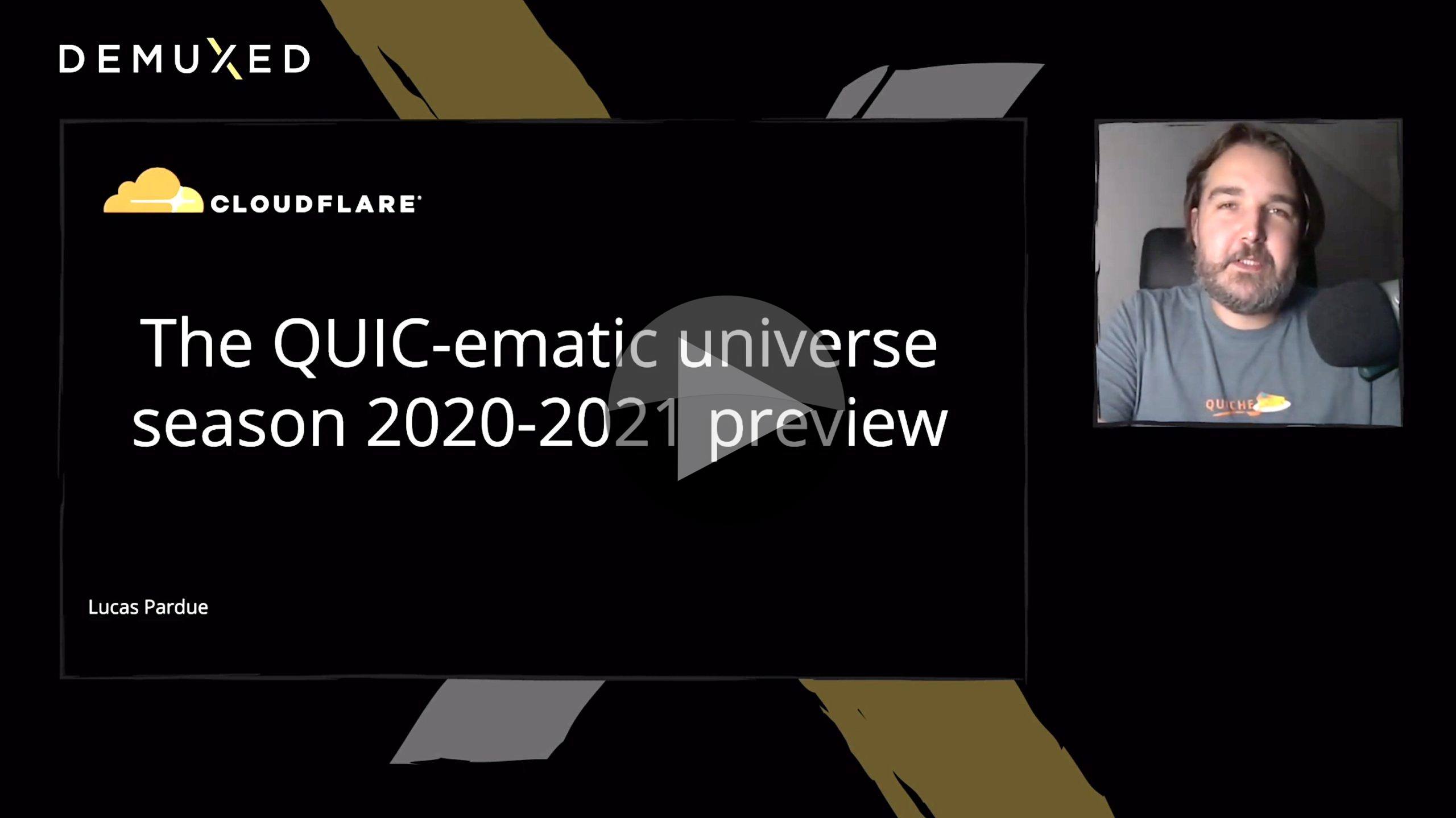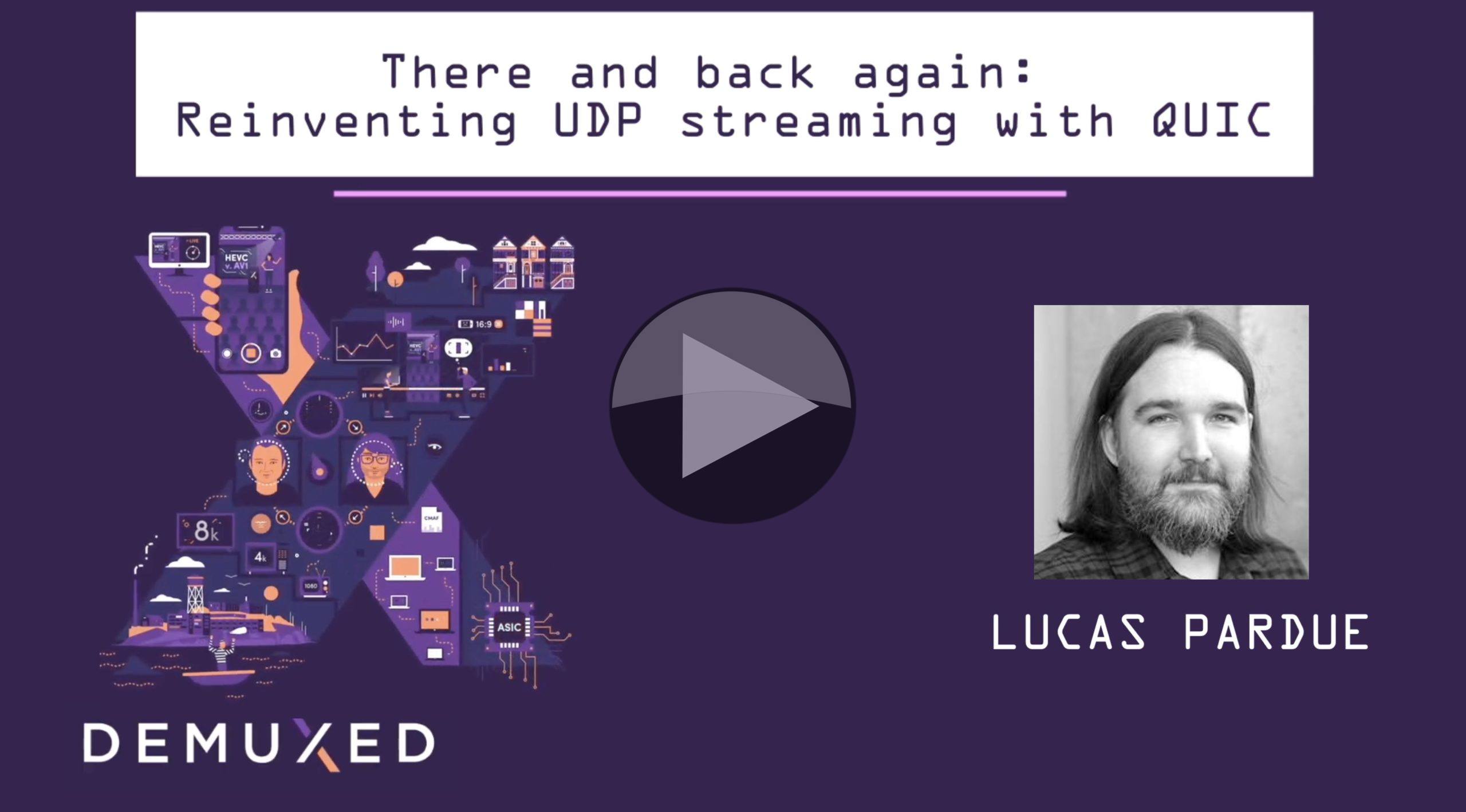QUIC is an encrypted transport protocol with better performance than HTTP and HTTP/2. While young, it’s already seeing some use in the larger internet companies who are learning how best to harness the optimisations. One of the stark differences is that it’s built on top of UDP rather than TCP. This is one of the main ways it increases efficiency. Freed from TCP’s constant acknowledgement of packets, QUIC also ensures reliable delivery but on its own terms which allows it to prioritise speedy delivery over acknowledgement admin. We’ve covered QUIC before, so if it’s new to you, check out this explainer as this talk is an update on what’s happened in 2020 and the plans for 2021 as QUIC aims to be standardised and much more available.
Lucas Pardue from Cloudflare works on the IETF working group devoted to QUIC and spoke at Demuxed 2020. “The IETF are standardisers” he says with QUIC being on its 31st draft with a move to standardise during 2021 what is called ‘IETF QUIC’ to differentiate from a slightly different version of QUIC from Google. IETF quick, Lucas outlines, delivers secure, reliable stream multiplexing.
QUIC actually forms a base layer for other applications like HTTP/3 with HTTP semantics to work on top of. Like most modern standards, QUIC is actually a name for more than one document. There is a transport layer, header compression, TLS handshake description and a document for recovery and loss protection. QUIC itself lives on UDP datagrams which is why one of the new options coming is to turn off some of the reliability which has been built on top of UDP to deliver TCP-like reliability for data which doesn’t really need it. One possibility here is running a QUIC tunnel where one QUIC connection actually has many QUIC streams within it. In this circumstance, you only want any one bit of data being protected by one reliable transmission mechanism. So you’d want to be turning off reliable transmission for your internal QUIC streams as they would be protected by the outer QUIC layer. There is a project called MASQUE which is working on this.
As with anything arriving on the market, it’s important to establish interoperability. We see this with the JT-NM and SRT plugfests. Lucas shows us the QUIC interop tester which automatically tests the latest implementations with each other and shows the results in a matrix plus allows access to logs and packet traces.
Lucas reminds us the QUIC streams are a first-class transport primitive providing reliable delivery. Within a stream, data will be delivered in order, but QUIC doesn’t specify how to schedule multiplexed streams. HTTP3 initially borrowed HTTP/2’s prioritisation scheme but found a better way to prioritise which is currently being discussed and finalised. Lucas has been working on quiche, Cloudflare’s own implementation of QUIC and shows a three-step process to getting quiche up and running.
Web Transport is another offering from QUIC which complements WebSocket which gives web apps better access to QUIC itself. The Chome Origin Trial explains how this is built in Chrome. Lucas talks about a test project he built on top of existing examples which is hosted at http3.wtf
Lucas ends by summarising the coming year: The working group is aiming to deliver documents to an IETF last call ahead of publication. The community will continue to get deployment experience as new users ar already working on enabling the technology and there is still work to be done on other adopted work items as well as considering others. Lucas ends by encouraging viewers to join in with the community,
Watch now!
Speaker
 |
Lucas Pardue Senior Software Engineer, Cloudflare Co-Chair of the QUIC working group, IETF |



